Best Compact Camera For Travel 2024 [Complete Buying Guide]

Choosing the best compact camera for travel is a decision almost as important as deciding where to take your next vacation. In choosing a camera, you’ll want to consider your budget, what special features are most important to you, and your photography style.
A few years ago, due to the increased quality of smartphone cameras, compact point-and-shoots were on shaky ground, with many companies slimming down their selection. However, the market for point-and-shoots has remained strong, no doubt due to their still superior quality, usability, and functionality.
To help you make the right purchase, we’ve compiled a list of the best compact cameras on the market for every budget as well as point-and-shoot tips and our complete compact camera buying guide!
![Best Compact Camera [Complete Buying Guide] Best Compact Camera [Complete Buying Guide]](https://ordinarytraveler.com/wp-content/uploads/2019/05/top-compact-cameras-every-budget.jpg)
Table of Contents
Best Compact Camera For Travel 2024
Best Compact Cameras Under $500
Sony Cyber-shot DSCWX220
For a camera pricing in less than $300, the Sony Cyber-shot DSCWX220 pulls its weight. The camera features 10x Optical Zoom, an 18.2MP sensor for great low light photography, and noise reduction technology. Additionally, the camera comes with WiFi capabilities, 10fps video, and a 360-degree panoramic mode.
Canon PowerShot SX740
With 40x Optical Zoom, an optical image stabilizer, and zoom framing assist, you’re going to have a tough time getting a blurry image out of the Canon PowerShot SX740. The PowerShot also features 4K video and time-lapse, WiFi and Bluetooth, a 20.3 Megapixel sensor, and high-speed continuous shooting capabilities.
Panasonic Lumix DC-ZS70K
The perfect budget compact camera for selfie-taking and vlogging, the Panasonic Lumix DC-ZS70K features 20.3 Megapixels, 30X zoom, plus a 180-degree flip screen feature — meaning you can get some really uniquely-framed shots! The camera also has 4K video recording capabilities with a post-focus and internal focus stacking technology to help reduce any shaky shots.
Sony RX100 II
If you prioritize image quality and post-processing options, then the Sony RX100 II, with its RAW shooting option, is for you. The camera also gives you functionality options such as full exposure control, a tiltable LCD screen, image stabilization, and built-in WiFi.
Best Compact Cameras $500 – $1000
Panasonic LUMIX DMC-LX10K
Just on the other side of $500, the Panasonic LUMIX DMC-LX10K comes with a large 1-inch, 20 Megapixel Sensor for excellent low-light photography, as well as a 3x (24-72mm) f/1/4-2.8 Leica Optical Zoom Lens. The camera is also outfitted for 4K video recording, exposure control, and has a large touch screen.
Ricoh GR II
The Ricoh GR II is the perfect mid-budget option if you want to start recording movies or vlogging. The camera captures full HD video in widescreen 1080p resolution at 30fps, the battery life will record up to 45 minutes, and the WiFi capabilities mean you can send your creations straight to your smartphone or computer.
Additionally, the GR II comes with an imagine engine that reduces noise and gives you high-res, color-rich images. Plus, the camera shoots in RAW format.
Canon PowerShot G7 X Mark II
With a 1-inch, 20.1 MP sensor, you’ll be shooting high-quality photos with the Canon PowerShot G7 X Mark II in no time. Not only does the camera give you auto or manual focus options, but it also has a 4.2x Optical Zoom lens, built-in WiFi, and a flip-up LCD monitor.
Not to mention, if you’re not up-to-speed on editing photos after the fact, the camera comes with built-in presents, including Fine-Detail, Monochrome, Landscape, and Faithful.
Sony RX100 III
A step-up in quality and functionality from the Sony RX100 II, the SONY RX100 III features highly customizable, user-friendly settings. The camera gives you full exposure control, 1080 60p HD video, 2.9x Optical Zoom, expandable ISO, a 24-70mm equivalent F/18-28 lens, and a 1-inch sensor.
Read more: The Ultimate Packing Guide for Travel Photographers
Best Compact Cameras $1000 +
Leica V-Lux (Typ 114)
Pricing in at a little more than $1100, the Leica V-Lux (Typ 114) has all the bells and whistles you could ever want in a compact camera. The camera comes with a 1-inch sensor that provides beautifully clear photos with high-resolution and natural coloring, customizable options for depth of field and focus, and 16x Optical Zoom.
Plus, if you’re a glasses wearer, it features individual diopter compensation for a natural shot every time.
Sony Cyber-shot DSC-RX1 RII
While not the cheapest option at over $2100, the Sony Cyber-shot DSC-RX1 RII is the perfect high-end compact camera to buy if you’re truly looking to take your point-and-shoot photography to the next level. The camera features a 2.4MP full-frame Exmor R CMOS sensor, a 25mm f/2.0 lens with macro capability, an optical variable low-pass filter, and a retractable electronic viewfinder.
If you’re willing to shell out a few bucks for crystal-clear photos and options galore, then this is the camera for you.
Fujifilm X100F
Not only does it look sharp, but the Fujifilm X100F will give you sharp photos as well. The camera features a 24.3 sensor, an 8-way focus lever, and a built-in ISO dial that’s incorporated into the shutter speed dial.
Additionally, the camera includes HD video recording capabilities (with various film simulation modes), a super fast electronic shutter, and a real-time parallax corrector so you can capture exactly what you want every time.
What to Look For in a Point-and-Shoot Camera
Wi-Fi
Most new cameras come with a Wi-Fi option, which makes uploading photos to the internet, or sending them straight to your smartphone a breeze. That said, some older models won’t come with the option, so if you think it will be important to you, double check.
Read more: How to Take Great Travel Photos as a Solo Traveler
Zoom
Compact cameras will come with both optical zoom and digital zoom features. Optical zoom means that you can magnify an image without reducing quality, while digital zoom is when your camera zooms in on and crops a frame.
Due to this, you’ll want to prioritize your camera’s optical zoom abilities. For example, if your camera has 8x optical zoom, that means that by using it the objects in the frame will appear 8x larger.
Megapixels
On a camera, image size is measured in megapixels; one megapixel consisting of one million pixels.
This size refers to the quality of the image your camera can produce, and paying attention to this number is important if you prioritize clear, high-resolution photos, and if you want to make prints.
The higher the megapixel number, the better the photo resolution you’ll get.
Sensor Size
Directly related to the Megapixel number, the sensor size is important when purchasing a compact camera, as it refers to how much light the device can capture. The larger the sensor, the more light your camera can pick up, which is important when taking evening or low-light photos.
Point-and-Shoot Photography Tips
Read the User Guide
No matter your photography knowledge, I always recommend reading the user guide before using your camera. Doing this will allow you to understand each and every function your camera has so you can optimize and get the most out of your photos.
In particular, the user guide will help you to understand the settings of your camera, including the PASM dial — Program Mode, Aperture Priority, Shutter Priority, and full Manual. The dial will most likely also include features such as full auto, flash, macro, landscape, active, and portrait settings.
Which setting you choose will depend on your abilities as a photographer and whether you feel that the automatic settings are hurting more than they are helping. My recommendation is to get comfortable with the automatic settings and the feel of your camera, and then switch over to the manual settings for added customization.
Consider Lighting
Lighting is a huge aspect of photography, whether you’re using a small point-and-shoot or a professional DSLR setup. As mentioned above, your camera’s sensor size and the Megapixel number will have a lot to do with how your photos turn out in low light, but there are some things you can do to make your photos turn out well regardless.
The first thing to do in low-light is to use a tripod. Tripods will reduce shake in your photos, including those pesky late-night light streaks.
Additionally, try and keep flash to a minimum when in low light. While turning on flash in low light settings might seem like a good idea, it tends to strip the photo of ambiance and make your subject look washed out. Instead, try and use whatever natural light is in the scene, or use a separate source to light your photos.
Know Your Formats
A lot of the high-end cameras listed above have multiple options for image formats, which will directly affect photo quality and resolution. JPEG is the standard for point-and-shoots, but having RAW capabilities will drastically improve the clarity of your photos, give you larger file sizes, and offer more options for photo editing.
Read More:
The Best Travel Cameras (And How To Choose)
The Best Cameras for Hiking and Backpacking
Sony a7II Review: The Perfect Camera for Travel Photography!
The Best Camera Lenses for Travel Photography
Must-Have Drone Accessories for Travel Photographers
The Best Travel Backpacks (For Every Budget)
The Best Photography Locations in California
The Best Photography Locations in Southern Iceland
As an Amazon Associate I earn from qualifying purchases. I’m also a member of other affiliate programs. For more info please read my Privacy Policy


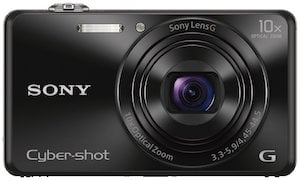
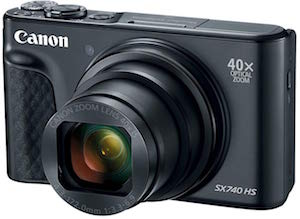
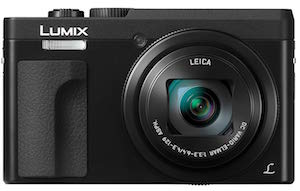
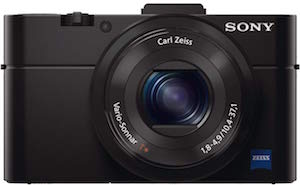
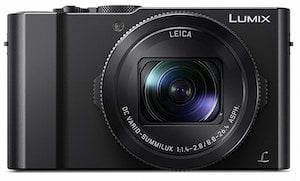
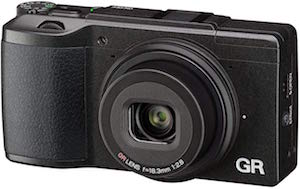
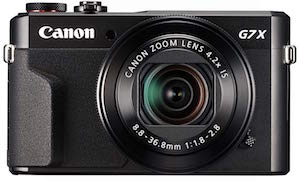
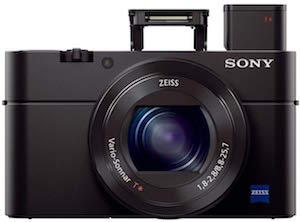
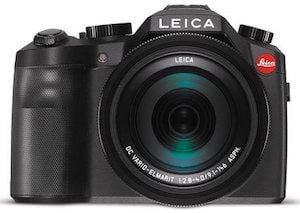
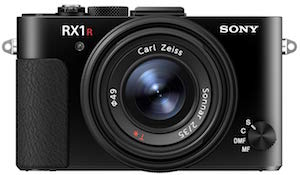
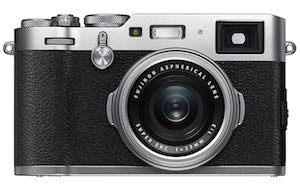



compact camera best to click pictures …
I am getting tired of carrying reflex camera and looking for a compact. Nowadays, those are really good quality. Thanks for helping out!